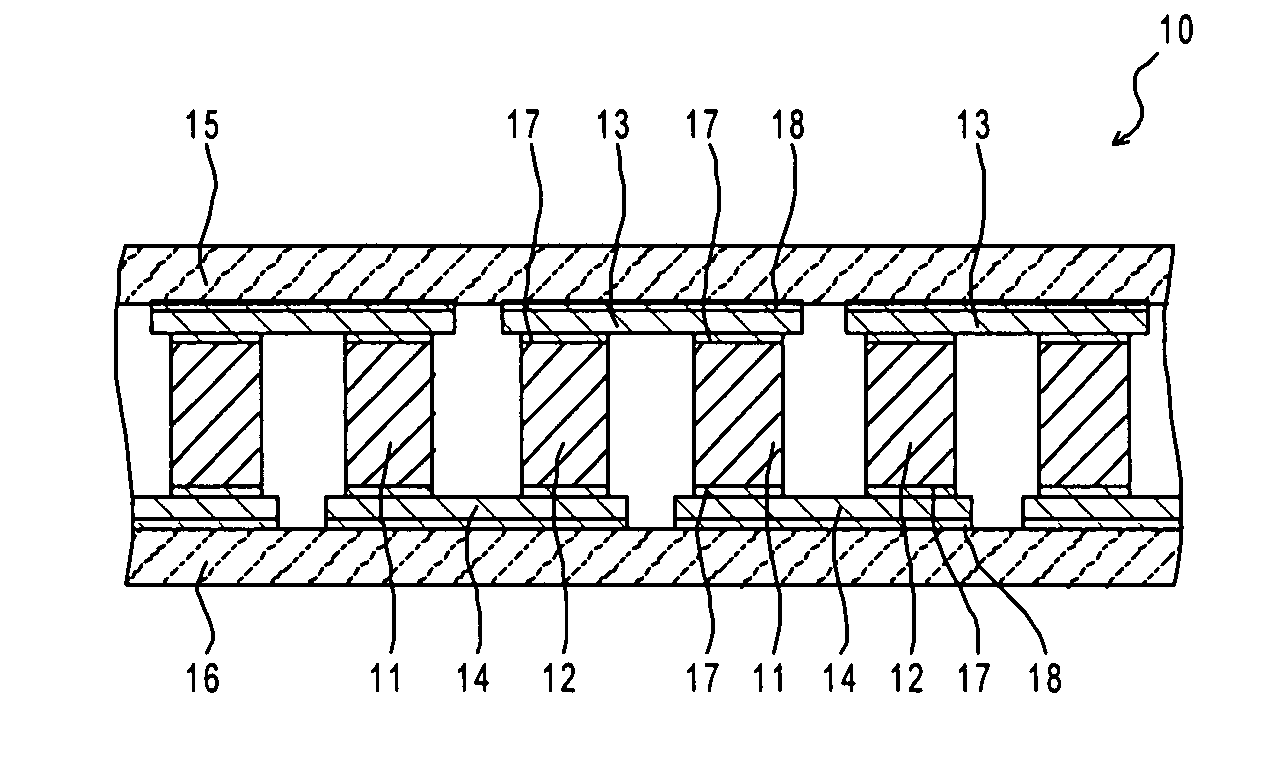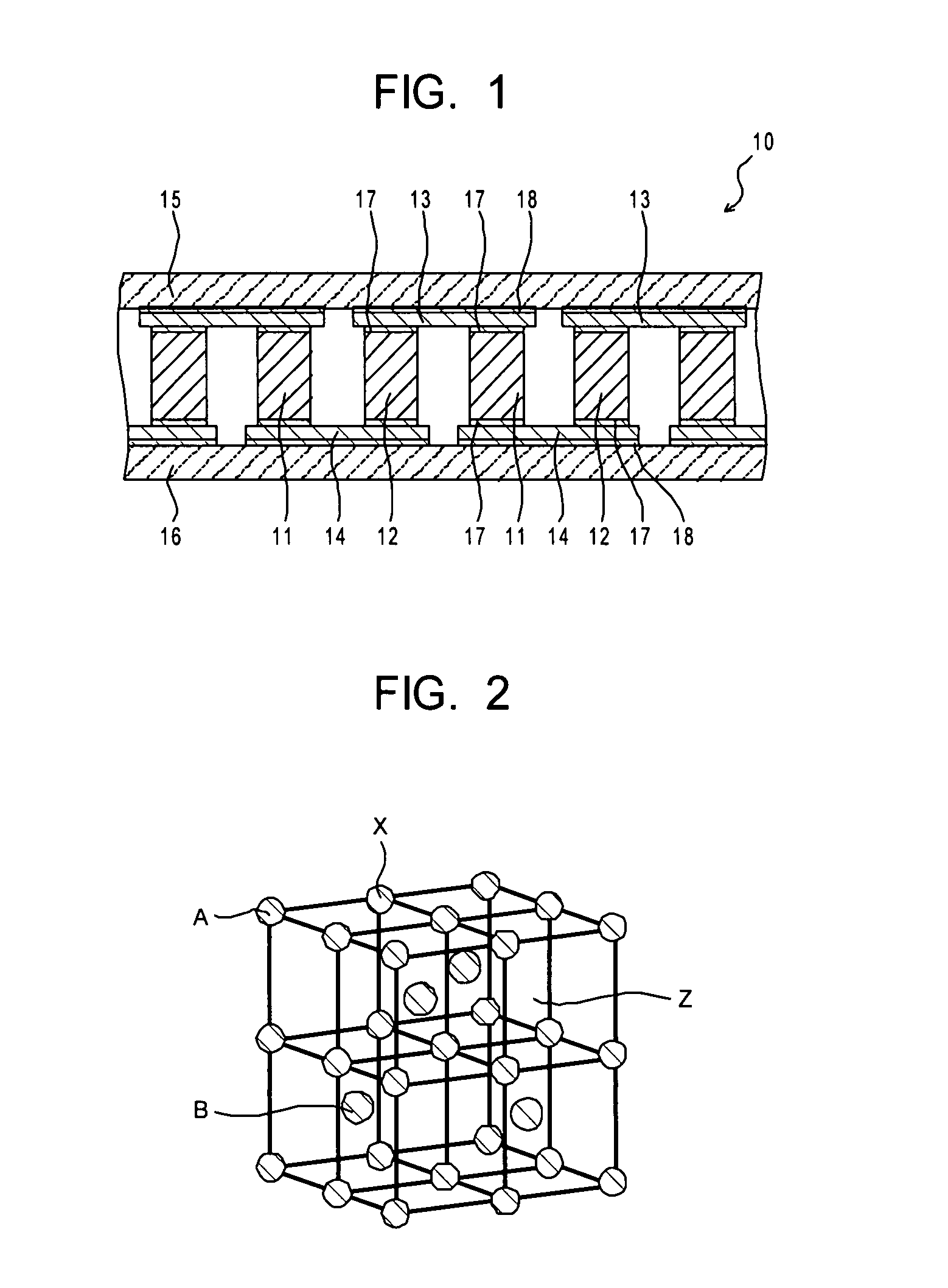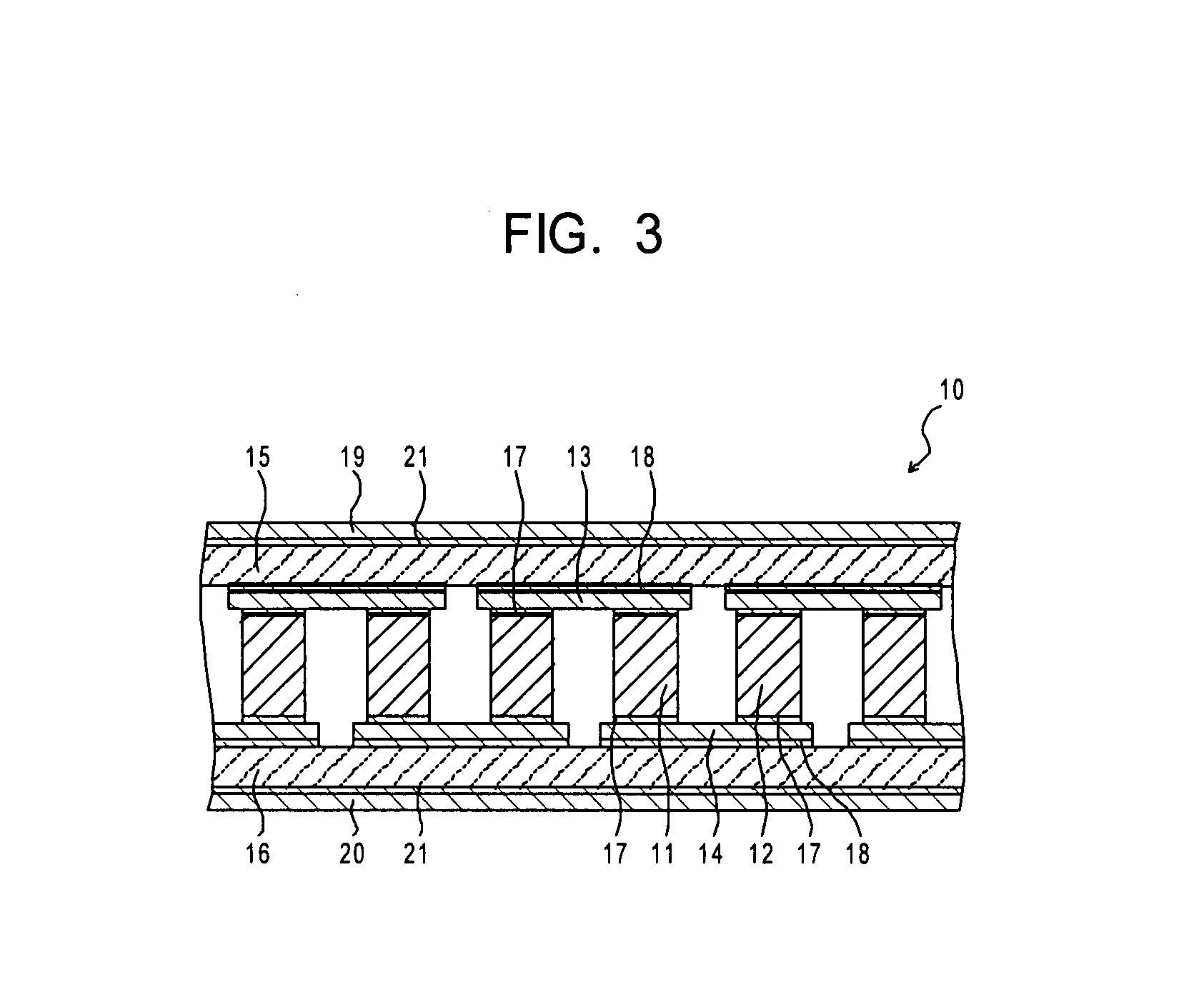Thermoelectric Conversion Module, Heat Exchanger Using Same, and Thermoelectric Power Generating Apparatus
a technology of conversion module and heat exchanger, which is applied in the direction of electrical apparatus, thermoelectric device details, and junction materials of thermoelectric devices, etc., can solve the problems of not being able to meet the heat resistance of soldering described in patent references 1 and 2, and the thermoelectric element of a power generating system used for a waste heat boiler cannot be used, etc., to achieve the effect of improving reliability, improving reliability, and improving practicability as a modul
- Summary
- Abstract
- Description
- Claims
- Application Information
AI Technical Summary
Benefits of technology
Problems solved by technology
Method used
Image
Examples
example 1
[0073]The thermoelectric conversion module shown in FIG. 1 was produced by the following procedure. First, a thermoelectric element production example will be described.
[0074](n-Type Thermoelectric Element)
First, Ti, Zr, Ni and Sn were weighed and mixed so to have a (Ti0.5Zr0.5) NiSn composition. The mixture raw material was charged into a copper hearth being cooled with water within an arc furnace and arc melted in a decompressed Ar atmosphere. The alloy was pulverized with a mortar and subjected to pressure sintering under conditions of an Ar atmosphere of 80 MPa at 1200° C. for one hour to obtain a disk-shaped sintered body having a diameter of 20 mm. The obtained sintered body was cut into a desired shape to obtain the thermoelectric elements.
[0075](p-Type Thermoelectric Element)
Ti, Zr, Fe, Co and Sb were weighed and mixed to obtain a (Ti0.5Zr0.5) (Fe0.2Co0.8) Sb composition. The mixture raw material was charged into a copper hearth being cooled with water within an arc furnace ...
examples 2 to 9
[0083]The same thermoelectric conversion modules as that of Example 1 were produced except that the combinations of the thermoelectric elements, electrodes and bonding materials were changed. The thermoelectric conversion modules were evaluated for their performance in the same manner as in Example 1. Table 1 shows the combinations of the thermoelectric elements, electrodes and bonding materials and the evaluated results of individual modules. In any of the combinations according to Examples 2 to 9, the bonding parts were free from peeling or a crack even after repeating an operation of holding at 500° C. for ten minutes for 30 times or more.
example 35
[0092]The n-type thermoelectric element having a (Ti0.3Zr0.35 Hf0.35)NiSn composition and the p-type thermoelectric element having a (Ti0.3Zr0.35Hf0.35)CoSb0.85Sn0.15 composition were prepared. The bonded surfaces of the individual thermoelectric elements had surface roughness Ra of 4 μm. They were used to produce a thermoelectric conversion module as follows. First, a paste of a Ti-containing Ag—Cu brazing material having a composition ratio (mass ratio) of Ag:Cu:Sn:Ti:C=60.5:23.5:10.0:4.0:2.0 was screen-printed on an Si3N4 plate having a thickness of 0.7 mm. After drying it, Cu electrode plates were arranged in six vertically and in 12 horizontally on the paste layer, and a total of 50 Cu electrode plates were arranged on the Si3N4 plate. Then, a heat treatment was performed in a vacuum of 0.8 Pa or less at 800° C. for 20 minutes to bond the Si3N4 plate and the Cu electrode plates. The above-described brazing material was used to bond the Cu plates to the entire surface opposite t...
PUM
 Login to View More
Login to View More Abstract
Description
Claims
Application Information
 Login to View More
Login to View More - R&D
- Intellectual Property
- Life Sciences
- Materials
- Tech Scout
- Unparalleled Data Quality
- Higher Quality Content
- 60% Fewer Hallucinations
Browse by: Latest US Patents, China's latest patents, Technical Efficacy Thesaurus, Application Domain, Technology Topic, Popular Technical Reports.
© 2025 PatSnap. All rights reserved.Legal|Privacy policy|Modern Slavery Act Transparency Statement|Sitemap|About US| Contact US: help@patsnap.com



